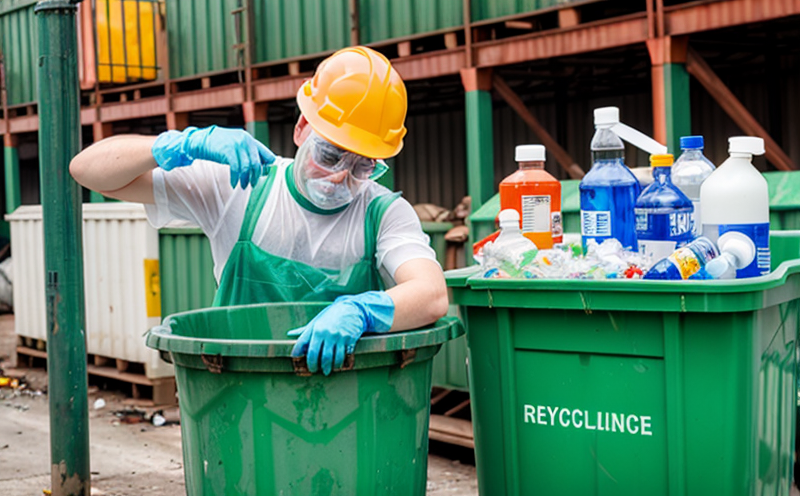DIN 38409 Waste Load Testing in Wastewater
The DIN 38409 standard provides a comprehensive framework for determining waste loadings in wastewater. This method is widely recognized and used across Europe, particularly for monitoring industrial discharges into municipal sewer systems to ensure compliance with environmental regulations.
Waste load testing is crucial for identifying the amount of pollutants that can be safely discharged into public waterways without causing harm. The process involves several key steps: sampling, preparation, analysis, and reporting.
- Sampling: Samples are collected from various points in the wastewater stream to ensure a representative sample. These samples should reflect the typical conditions of discharge.
- Preparation: Prepared samples undergo necessary pretreatment to remove any interfering substances that could affect the testing results.
- Analysis: Analytical techniques such as spectrophotometry, chromatography, and gravimetric analysis are used to measure specific parameters like chemical oxygen demand (COD), total organic carbon (TOC), and heavy metals. DIN 38409 specifies the use of standard methods.
- Reporting: Results are compiled into a detailed report that includes raw data, calculated values, and compliance status relative to regulatory limits.
The testing process is designed to be rigorous and precise. Compliance with DIN 38409 ensures that industries can discharge waste in a manner that does not degrade the quality of receiving waters or pose risks to aquatic life.
Implementing DIN 38409 waste load testing involves collaboration between various stakeholders including industry, regulatory bodies, and environmental agencies. The results provide critical data for decision-making processes aimed at minimizing environmental impact while maintaining industrial operations.
Customer Impact and Satisfaction
For quality managers and compliance officers, DIN 38409 waste load testing offers several benefits that contribute to customer satisfaction:
- Regulatory Compliance: Ensures adherence to local and international environmental regulations.
- Risk Management: Identifies potential issues early in the discharge process, allowing for corrective actions before they escalate into larger problems.
- Precise Data: Provides accurate data on waste loadings that can be used to optimize processes and improve efficiency.
- Risk Reduction: Reduces liability risks by ensuring compliance with stringent environmental standards.
The testing process not only supports regulatory requirements but also enhances the reputation of companies as responsible stewards of the environment. This, in turn, fosters long-term relationships with customers and stakeholders.
R&D engineers find DIN 38409 waste load testing particularly useful for developing new processes that minimize environmental impact while maintaining productivity. Procurement teams can leverage this information to select suppliers who adhere to high environmental standards, ensuring a consistent supply chain quality.
International Acceptance and Recognition
DIN 38409 has gained significant recognition in Europe due to its robustness and accuracy. It is widely accepted by regulatory authorities, environmental agencies, and industry stakeholders for assessing the impact of industrial discharges on water quality.
The standard’s acceptance extends beyond national borders as it aligns with broader international standards such as ISO 14001 and EN 12596. This compatibility ensures that results are universally understood and comparable across different regions.
Adopting DIN 38409 demonstrates a commitment to sustainable practices, which is increasingly important in global markets. Companies that adhere to this standard not only meet local requirements but also position themselves favorably for international business opportunities.
Competitive Advantage and Market Impact
DIN 38409 waste load testing provides a competitive advantage by ensuring that companies are at the forefront of environmental compliance. This can lead to:
- Innovation: Encourages continuous improvement in industrial processes.
- Trust: Builds confidence among customers, suppliers, and regulators.
- Cost Savings: Identifies inefficiencies that can be addressed to reduce operational costs.
- Market Entry: Facilitates entry into markets with stringent environmental regulations.
The use of DIN 38409 also supports broader market trends towards sustainability and corporate social responsibility. Companies demonstrating leadership in this area are more likely to attract investors and partners who share these values.
By adhering to DIN 38409, companies not only meet legal obligations but also contribute positively to the environment. This proactive approach can enhance brand reputation and foster a positive image among stakeholders.





